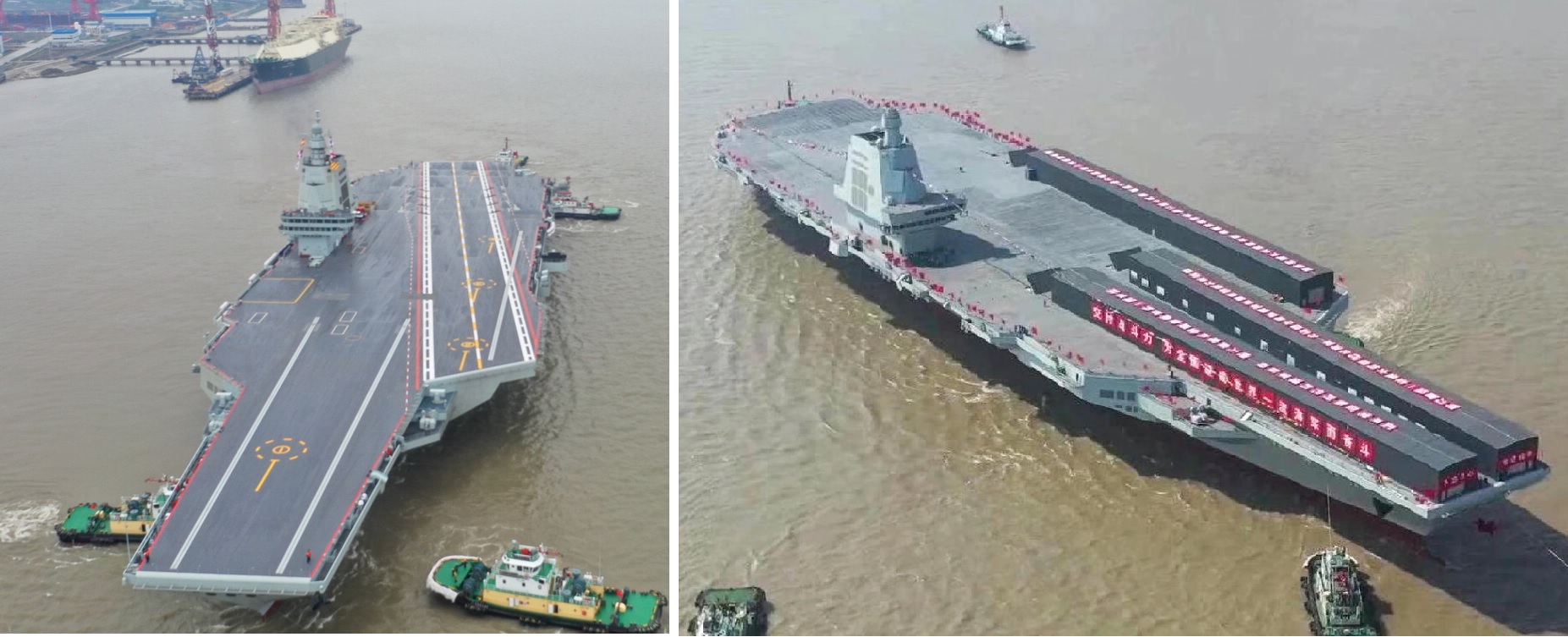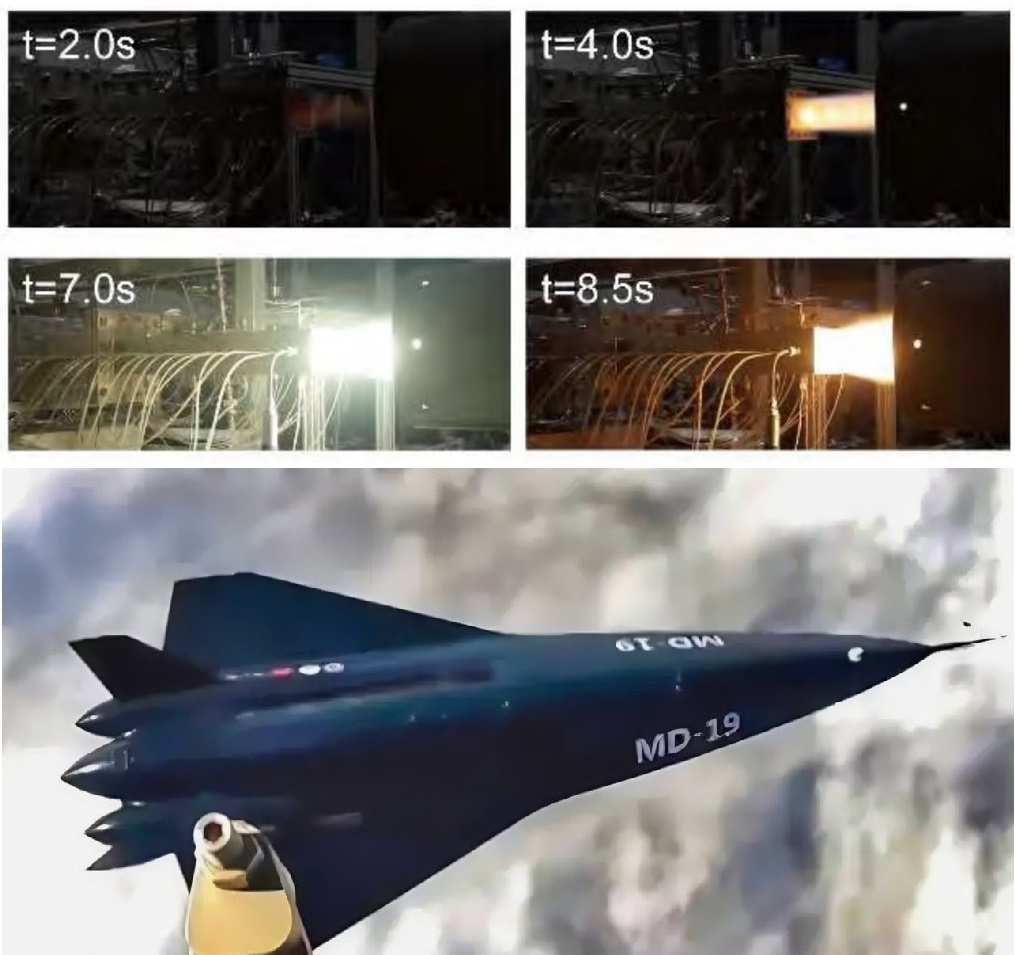China Commissions 3rd Aircraft Carrier Fujian, Its First EMALS-Equipped Supercarrier

China has officially commissioned Fujian (Hull 18), its third aircraft carrier and the first to be fully designed and built indigenously. The commissioning ceremony took place at a naval base in Sanya, Hainan province, with senior Chinese military and political leaders participating in the event. Named after China’s eastern coastal province of Fujian, the supercarrier represents a technological and strategic leap for the People’s Liberation Army Navy (PLAN).
This historic induction marks China’s transition from a regional maritime power to a blue-water navy capable of sustained global operations — symbolizing the nation’s growing confidence and shipbuilding prowess.
The Fujian: China’s First Supercarrier-Class Design
The Fujian (Type 003-class) is the first Chinese carrier to rival American supercarriers in both scale and sophistication. With a full-load displacement of approximately 80,000 to 85,000 tons and a length of around 316 meters, it dwarfs its predecessors Liaoning and Shandong.
Unlike those earlier vessels, which use ski-jump ramps to launch aircraft, Fujian is equipped with three Electromagnetic Aircraft Launch Systems (EMALS) — a feature previously exclusive to the U.S. Navy’s Gerald R. Ford-class. The EMALS allows the carrier to launch heavier, stealth-capable, and more heavily armed aircraft, significantly enhancing combat effectiveness and sortie rates.
With an aircraft carrying capacity of 60–70 aircraft, Fujian brings a modern air wing into service, including J-35 stealth fighters, J-15T catapult-capable strike fighters, and the KJ-600 early warning aircraft, supported by Z-18 and Z-20 helicopters.
Fujian’s Key Specifications
| Feature | Specification |
|---|---|
| Class/Type | Type 003 Aircraft Carrier |
| Name | Fujian (Hull 18) |
| Displacement | 80,000–85,000 tons (full load) |
| Length | Approx. 316 meters |
| Beam (Width) | Around 78 meters |
| Propulsion | Conventional (steam turbines with integrated electric propulsion) |
| Launch System | 3 x Electromagnetic Catapults (EMALS) |
| Arresting System | Electromagnetic Advanced Arresting Gear |
| Aircraft Capacity | 60–70 aircraft |
| Primary Air Wing | J-35 stealth fighter, J-15T strike fighter, KJ-600 AEW aircraft, Z-18/Z-20 helicopters |
| Radar System | Type 346B AESA Radar |
| Crew | Estimated 2,500–2,800 personnel |
Carrier Aviation: The Rise of the J-35 and KJ-600
The Fujian’s EMALS technology is pivotal for China’s next-generation carrier aviation. It allows for the seamless launch of the J-35 stealth carrier fighter, a twin-engine aircraft with advanced radar-absorbing coatings, internal weapons bays, and long-range strike capabilities designed to rival the U.S. Navy’s F-35C.
The KJ-600 airborne early-warning and control aircraft adds another strategic layer, extending the carrier group’s radar coverage and command capabilities across hundreds of kilometers — similar to the U.S. E-2D Hawkeye. These aircraft together enable the PLAN to operate with unprecedented efficiency, awareness, and strike depth.
China’s Expanding Carrier Fleet
With Fujian’s commissioning, China now officially operates three aircraft carriers, each reflecting an evolution in design and capability:
-
Liaoning (CV-16) – China’s first carrier, a refitted Soviet Kuznetsov-class vessel, commissioned in 2012. It displaces around 60,000 tons and carries 36–40 aircraft, primarily for training and doctrine development.
-
Shandong (CV-17) – China’s first domestically built carrier, commissioned in 2019. It displaces 66,000–70,000 tons and carries around 44 aircraft, featuring structural and operational improvements over Liaoning.
-
Fujian (CV-18) – The first fully indigenous and technologically advanced carrier, commissioned in 2025. With a displacement of 80,000–85,000 tons and a capacity for up to 70 aircraft, Fujian marks China’s transition into the era of electromagnetic catapult-equipped supercarriers.
China’s long-term naval ambitions reportedly include a fleet of at least six carriers. The next in line, the Type 004, is expected to be nuclear-powered, providing virtually unlimited range and enhanced power for future energy-intensive systems such as directed-energy weapons.
Strategic Implications: Toward a Global Navy
The commissioning of Fujian signals China’s ambition to achieve operational parity with the U.S. Navy in the Indo-Pacific. As the PLAN’s most capable warship, Fujian can serve as the flagship for carrier strike groups (CSGs) operating deep into the Pacific, Indian Ocean, and beyond.
This advancement strengthens Beijing’s ability to project power around Taiwan, the South China Sea, and Western Pacific, challenging existing U.S. and allied naval dominance. It also aligns with China’s Belt and Road maritime strategy, ensuring protection for overseas trade routes and strategic infrastructure from the Strait of Malacca to the Persian Gulf.
A Turning Point for the PLAN
The induction of Fujian marks a defining moment for the People’s Liberation Army Navy. With three active aircraft carriers — including its first EMALS-equipped supercarrier — China now has the foundation for continuous carrier operations and sustained global presence.
Fujian’s electromagnetic catapult system, stealth aircraft capability, and advanced command architecture place it closer to U.S. supercarriers than any other vessel currently afloat outside the United States. As Fujian transitions from initial operations to full deployment, it will reshape the balance of naval power across the Indo-Pacific.
China has effectively crossed the line from carrier possession to carrier mastery, signaling its arrival as a true global maritime power in the 21st century.
✍️ This article is written by the team of The Defense News.






